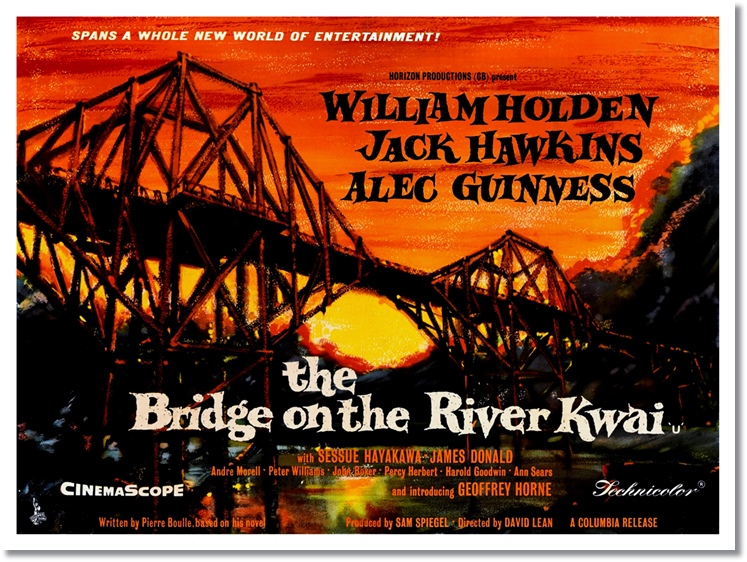The Bridge on the River Kwai: Understanding the Burma-Thailand Railway POW Experience

The film, The Bridge on the River Kwai, won the Oscar for ‘best motion picture’ in 1957 as well as securing a further six awards (including Alec Guinness, for best actor, as well as David Lean, for best director). Quickly becoming the touchstone for popular understanding of what it meant to be prisoner of the Japanese (POW) during World War II, the film is emblematic of the representation of that experience. Few prisoners of the Japanese would attest to its veracity in terms of the physical condition of the POWS on screen. ‘We were never that well fed’ was a frequent commentary.
The film was grounded in a book written by a Frenchman, Pierre Boulle, who had spent time as a rubber planter in British Malaya. After time with the French Army in Indo-China and service with the Free French, he was eventually captured while serving with British intelligence behind the lines in French Indo-China. His time in captivity informed his writing. Boulle went on to write La planète des singes, best known by its English language title and known through the subsequent film adaption, Planet of the Apes.
The Bridge on the River Kwai, in film format, differed from the book in several respects, notably in the fact that in the book the Bridge is not destroyed (in the film the bridge’s destruction is represented as a cataclysmic ending) plus the role of William Holden was written especially for the film. Holden had starred in an earlier POW film, Stalag 17, and his addition was aimed at the US movie-going market. In the book there are no US characters and there are no known successful escapees from the Burma-Thailand railway, a feat Holden achieves in the film. His character played the role of a survivor from the USS Houston, sunk at the Battle of the Sunda strait.
The Bridge on the River Kwai was a huge success at the box office although its controversial portrayal of senior officers in captivity prompted ongoing controversy. The idea that such officers, personified by Alec Guinness’s Oscar winning portrayal of Col. Nicholson, essentially blurred the lines between collaboration and non-collaboration in pursuit of maintaining the morale of their men, was decried by those who had experienced captivity and the Burma-Thailand railway. The film did prompt greater examination of the POW experience as well as the real hero of the bridge building, Lt. Col. Philip Toosey, whose exemplary behavior in captivity on behalf of his men as well as in the post-war years, showed the true extent to which the essentially ‘powerless’ POWs worked to frustrate their captors at every turn.